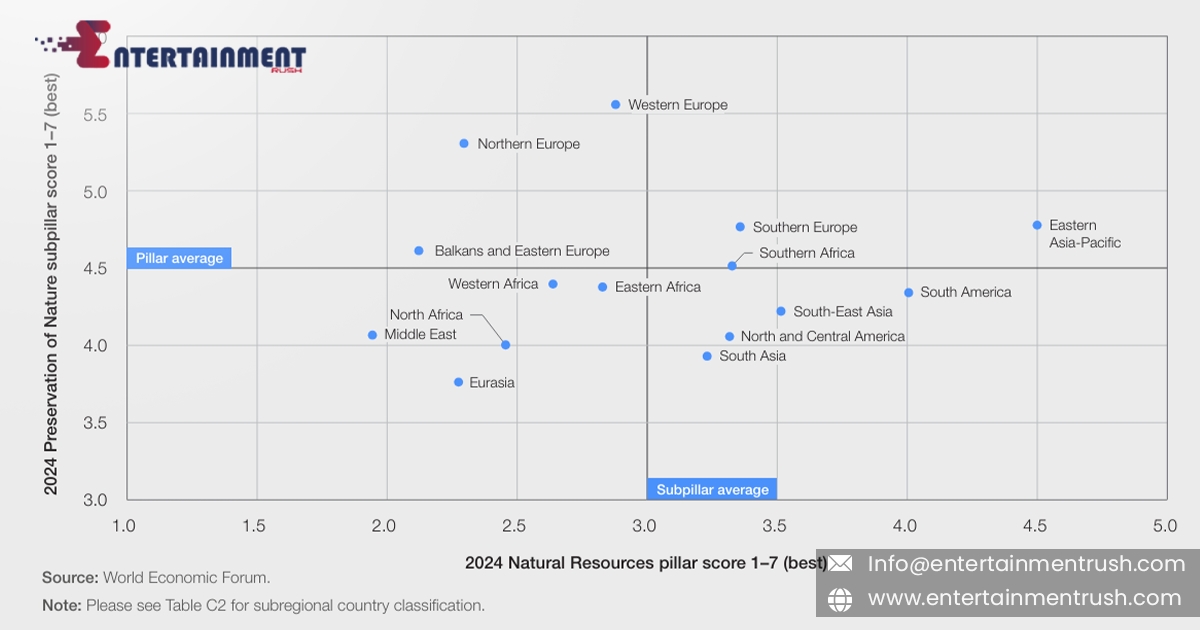If you’ve ever felt a sense of peace or rejuvenation from spending time outdoors, you’re already familiar with biophilia—the intrinsic human desire to connect with nature. Studies have shown that spending time in natural environments can offer numerous health benefits, such as lowering blood pressure, boosting immune function, and reducing stress hormone levels.
It’s no surprise that nature-based tourism is rapidly growing in popularity. According to the World Economic Forum’s Travel and Tourism Development Index (TDDI) 2024, more and more of the 1.3 billion global tourists are focusing on natural and cultural attractions when planning their trips. Since 2021, TripAdvisor pageviews have increasingly concentrated on these outdoor destinations, highlighting the growing desire for nature-centric travel experiences.
The Financial Impact of Nature Tourism
Nature tourism, a core element of biophilia, generates over $600 billion in global revenue. Wildlife tourism, in particular, plays a vital role in this sector, contributing to 22 million jobs worldwide. In Africa alone, wildlife tourism generates $142 million in entrance fees for protected areas, underscoring the economic importance of preserving natural habitats.
Furthermore, an astounding $44 trillion in economic value—over half of the world’s total GDP—is moderately or heavily dependent on nature. This highlights not just the cultural and ecological value of nature, but its undeniable contribution to global economies. For countries heavily reliant on tourism, especially in less-developed regions, the economic significance of nature-based travel is even more pronounced. For instance, tourism makes up about 8.5% of Africa’s GDP, with nature-based tourism being a major driving force.
A Growing Industry Post-COVID
As global travel rebounds following the COVID-19 pandemic, the tourism industry is experiencing exponential growth. In 2023, the travel and tourism sector represented 9.1% of global GDP—amounting to over $9.9 trillion—and it’s projected to break records in 2024, reaching $11.1 trillion. This surge in tourism is likely to increase the pressure on natural environments and raise questions about how to balance growth with sustainability.
The Balancing Act: Growth vs. Sustainability
While the tourism sector continues to grow, it’s essential that this progress does not come at the cost of nature. The need for a delicate balance is more important than ever, particularly as the global tourism sector is expected to expand at nearly double the pace of the global economy by 2033, potentially adding over 100 million new jobs.
To ensure that the natural spaces we cherish remain accessible and protected, the tourism industry must adopt sustainable practices. Currently, the sector uses 5.8% of the world’s water and contributes up to 8% of global material extraction. These figures emphasize the environmental footprint of the industry and the importance of taking action to reduce its impact on local resources.
Progress and Challenges
Fortunately, progress is being made. Since 2019, the Environmental Sustainability pillar of the TDDI has risen by 2.7%, with energy sustainability seeing a 4.6% increase as more travel sectors embrace low-carbon energy options like solar. This shift bodes well for future sustainable travel, but there is still significant work to be done. The Pollution and Environmental Conditions subpillar has only improved by 0.5%, signaling slow advancements in critical areas like air pollution reduction, deforestation, and wildlife conservation.
The consequences of these environmental challenges are stark. Nearly 7 million people die annually from pollution-related causes, and over 44,000 species are at risk of extinction. These issues threaten our ability to fully connect with nature, making it crucial that tourism strategies incorporate stronger conservation efforts.
Collaboration for a Sustainable Future
Addressing these challenges will require a coordinated, multi-sector approach. The World Economic Forum’s Nature Action Agenda is a key part of this effort, aiming to halt biodiversity loss by 2030. This agenda encourages global cooperation to protect natural resources and biodiversity, supporting the overarching goal of living in harmony with nature by 2050.
Ultimately, for biophilia to thrive as a travel trend, it’s essential that both the tourism industry and travelers themselves embrace sustainability. By supporting responsible tourism practices and investing in conservation, we can ensure that future generations will continue to enjoy the healing power of nature—both economically and emotionally.




Leave feedback about this